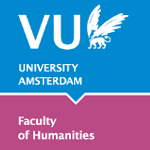
|
Digital Humanities Workbench |
Home page > Special topics > E-literature > Introduction Electronic literature: introductionIn this section, the term 'electronic literature' refers to literature that relies on digital techniques for its presentation. This is literature that can only be read (or maybe better: experienced) with a computer, and which printed formats cannot do justice to. A usable definition is: Electronic literature includes (the production and reception of) texts that use the properties and new capabilities of electronic means of communication as essential components of their literary character. (Jan Baetens & Eric Vos. "Literatuur in een elektronische omgeving". In DWB 4, 1999, p.438) This section provides a brief overview of the various features shared by electronic literature, as well as the techniques most commonly used to produce it. Each feature or technique is discussed along with one or two examples. In the Links section, you can find various links to relevant websites on the field, some of which include (large) collections of electronic literature. If you want to read more, this is a good overview article, with many references to examples of electronic literature:
In addition, two Dutch literary journals released themed volumes (including CD-ROM with examples) dedicated to this topic:
Both publications are available from the University Library. |
Other topics in this section: Characteristics Techniques Links |
